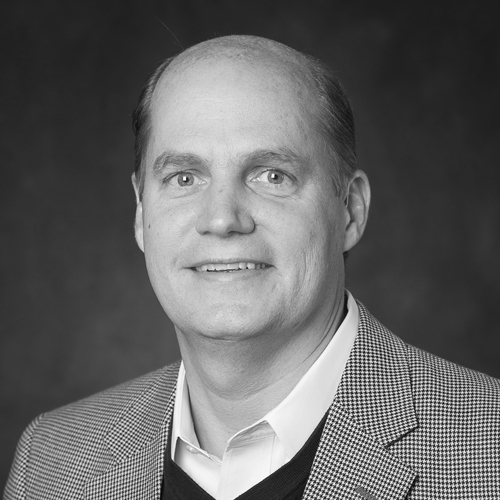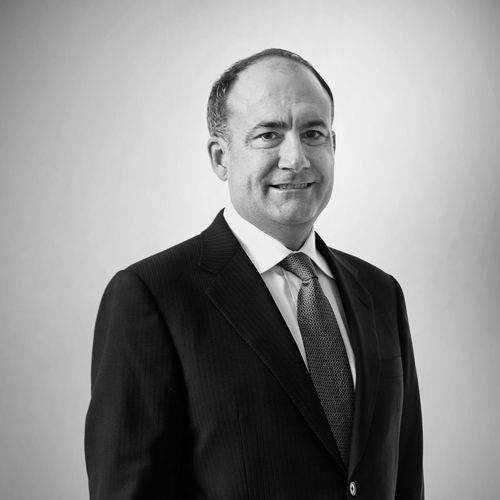American Express Company (Amex) is known for the long tenures of its employees and its tendency to hire internally. That changed when the Fortune 90 financial services corporation needed to build out its litigation function. The company turned to Mark Califano, then the head of litigation at GE Capital. Califano had been with GE for more than five years, and he’d previously served as chief legal counsel for the United Nations Independent Inquiry Committee into the Iraq Oil-for-Food Programme. He knew what was needed for an effective litigation team: bright, capable people with the appropriate experience, not necessarily specialization. “That’s the team that gets it done,” Califano says.
Once aboard as Amex’s senior vice president and managing counsel of litigation, Califano had a good idea of what he needed to build at the company, but he didn’t go in with firm expectations. “You have to be careful about going into any industry with a theory,” he cautions. “You often end up fighting yourself.”
First, he needed to understand the needs of his client and its market. He quickly assessed the nuances of Amex’s culture and how it differed from the litigation team he’d led at GE. He was aware of the expectations he might face, with some people looking for intense focus on constructive engagement rather than a bureaucratic process. “Some places are very aggressive, which isn’t necessarily bad,” he adds. The key to managing expectations, he says, was to discuss those differences and craft a process his client and colleagues could follow.
When Califano joined Amex, the preceding senior lawyer who had been responsible for litigation took his deputy attorney with him when he left. Little remained of the department’s former structure by the time Califano arrived. Califano was lucky that Amex—like most credit card companies—kept a wealth of data, with which he was able to track cases and keep up on financial reporting and case management. That, plus the remaining legal staff, worked in Califano’s favor.
Even with those advantages, it wasn’t a simple matter to build out the function. “It was like changing tires on a bike while it’s still moving,” Califano notes. Amex deferred to Califano’s judgment and gave him a great deal of leeway to change the department’s strategy. First, he assessed the cases Amex already had and how its lawyers managed them. The size of the litigation docket at a company of this size is significant and complex. He realized early that he needed more experienced trial lawyers in the department, people who could substantively guide counsel and formulate strategy.
Califano looked to hire attorneys with extensive experience in the courtroom as well as at the corporate level. He needed people who could produce the quality of work necessary to win key legal battles, and he also needed individuals who could keep their focus on the business and corporate partners. “In an environment like this, you can’t write a 20-page memo that your client will read,” he insists. “You need to explain it in 10 minutes, and then they’ll want to ask questions and make a decision.” Because of that mind-set, Califano looked for people who knew how to prioritize issues, talk to senior-level business clients, and help those managers make and execute decisions.
Hiring was one aspect of changing the legal group, but another was interdepartmental. Califano worked with his colleagues to mitigate risk early, an effort to avoid the need for litigation down the road. Califano also made it clear that, though his primary goal was improving the company’s litigation function, the lawyers should always have the goal of finding the optimal solution for the client, which isn’t always in court. This ideology was apparent in the Supreme Court’s 5-3 decision in favor of Amex in 2013, which set a precedent that disputes with retailers should be handled through individual arbitration, and that those retailers were bound by an agreement to do so. Califano’s department took a long look at its mediation and arbitration practices and aimed to stay current, accessible, and efficient, making the most of alternative dispute resolutions. “We want them to make sense for everyone involved,” Califano adds. Today, card members who use those processes find them fair and effective.
Califano describes Amex’s current litigation group and general counsel’s office as “very collegial.” Laureen Seeger, who became general counsel in June 2014 (after serving as executive vice president, general counsel, and chief compliance officer at McKesson Corporation since 2006), manages the legal department.
Communication is highly valued throughout the department, Califano adds, which is crucial to create an effective legal function. That’s easy for the lawyers who live and work together in New York, but Amex’s lawyers go beyond this to communicate regularly with international colleagues, as well. “You get used to that in such a big company,” Califano says. There are many lawyers throughout the company who are experts in one subject or another, and it is crucial that they all speak to one another. “Even if they don’t have time to talk to you, you have to make sure they know you’re there and available to help.”
Califano’s work to strengthen the strategy of Amex’s litigation experts isn’t finished, and he’s spent the last three years making changes as needed. His goals going forward will change depending on how the industry and certain markets continue to evolve.
There are a few things he’s certain he wants to tackle, though. He wants to have as much direct management over important cases as possible, and his team is improving a broad array of business processes and governance that face litigation risk. “We’ve had good control so far, but that could change if the docket grows,” he admits.
Another objective is to continue developing talent Amex already has. For example, Califano learned that the company’s team in Florida consisted of analysts who had been with the company for a long time and knew internal processes well. He and his team realized that if they were given the education and tools to become certified litigation paralegals, the entire group would make significant strides in efficiency and capacity. It worked. The Florida team has more than doubled its capacity and expanded the breadth of its responsibility.
One of Califano’s major goals, regardless of the development of the industry, will be a change in the culture and in every litigator who works for Amex. Trial lawyers are tasked with reacting to crises, but that often means their work becomes too reactionary. Califano wants his litigators to take responsibility early, spot risks, and work with their legal colleagues and business clients to mitigate or reduce them.
“If you can do that on the front end, you save incredible amounts of money and time,” he says. That mind-set requires lawyers to work closely with their business partners, but in doing so, they become assets to the company.

